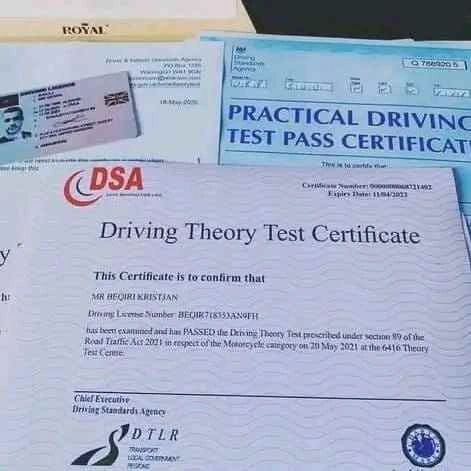driving licence change of address

Changing Your Address on Your UK Driving Licence: A Complete Guide
If you’ve moved to a new address in the UK, it’s essential to update your driving licence to reflect this change. Failing to do so can lead to issues with identification and even legal complications. Here’s a comprehensive guide on how to change your address on your UK driving licence.
Why It’s Important to Update Your Address
Updating your address on your driving licence is crucial for several reasons:
- Legal Requirement: It is a legal obligation to keep your driving licence information current. Under the Road Traffic Act 1988, failing to notify the DVLA (Driver and Vehicle Licensing Agency) of a change of address can result in a fine.
- Identification: Your driving licence is a key form of identification. Having the correct address ensures it accurately represents your current situation.
- Driving Record: Updates to your address help maintain accurate records for any potential future queries or issues related to your driving history.
When to Change Your Address
You should update your driving licence as soon as you move to a new address. This includes changes to:
- Home address
- Business address (if you use your driving licence for business purposes)
How to Change Your Address
You can update your address on your driving licence through the DVLA using one of the following methods:
1. Online
The quickest and most convenient way to change your address is online. Here’s how:
- Visit the DVLA website: Go to the official DVLA site.
- Provide Your Information: You’ll need your driving licence number, National Insurance number, and postcode of your new address.
- Complete the Form: Fill out the online form with your new address details.
- Submit: Once completed, submit the form. You should receive a confirmation once your application has been processed.
2. By Post
If you prefer to change your address by post, you can do so using a paper form:
- Obtain the D1 Form: Request a D1 application form for a driving licence from the DVLA website or at a Post Office.
- Fill Out the Form: Complete the form with your details, including your new address.
- Send It to the DVLA: Mail the completed form to the address specified in the instructions. Be sure to include any necessary documents or payment if applicable.
3. In Person
If you wish to change your address in person, you can do so at a local Post Office that offers DVLA services:
- Bring Required Documents: Take your current driving licence and proof of your new address (e.g., utility bill, bank statement).
- Complete the Process: A representative will help you fill out the necessary forms and submit them to the DVLA on your behalf.
What Happens Next?
Once you’ve submitted your application, the DVLA will process your request. Here’s what to expect:
- Confirmation: You should receive confirmation of your address change from the DVLA.
- New Driving Licence: If you requested a new driving licence with the updated address, it will be mailed to your new address. This typically takes a few weeks.
- Keep Your Old Licence: Your old licence remains valid until the new one arrives. You can continue to drive legally during this period.
Important Considerations
- Fees: Changing your address is free if you’re updating an existing driving licence. However, if you require a new photo or other updates, there may be a fee.
- Timeframe: It’s advisable to change your address as soon as possible after moving. Delays can complicate matters, especially if you need your licence for identification purposes.
- Privacy: Your address will be stored in the DVLA database but will not be publicly accessible. However, certain authorities may access this information for specific purposes.
Conclusion
Updating your address on your UK driving licence is a straightforward process that ensures your records are accurate and up-to-date. Whether you choose to do it online, by post, or in person, keeping your details current is essential for legal compliance and identification. If you have any questions or need further assistance, visit the DVLA website or contact their customer service for help.

Leave a Reply